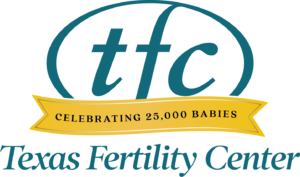
Treating male factor infertility at our San Antonio fertility center
Once a specific male factor infertility diagnosis has been made, our doctors will recommend treatment to optimize the number of healthy, motile sperm exposed to the egg. In some cases, treating male factor infertility can improve sperm to normal ranges, so that conception can happen on your own without further fertility treatment. However, there are many successful treatments that our San Antonio male fertility specialists can use to help overcome male infertility, such as intrauterine insemination (IUI) or in vitro fertilization (IVF).
How natural conception works
In order for fertilization to happen naturally during intercourse, the sperm have to swim from the vagina, into and through the cervix, up to the top of the uterus, and then into the far reaches of the fallopian tube. Once inside the fallopian tube, they locate the egg and, through a very complex process, one sperm penetrates the egg and releases its DNA. This process is called fertilization. Ideally, there should be millions of sperm in the ejaculate in order for thousands to make it into the uterus, a few hundred to enter the fallopian tube, and one to fertilize the egg.
Intrauterine insemination or IUI
When a man has a relatively low sperm count or low motility, our doctors may recommend intrauterine insemination (IUI). This treatment involves isolating the moving sperm from the ejaculate in our laboratory, concentrating them into a small volume (ideally yielding at least 10 million moving sperm), and then placing the sperm painlessly into the woman’s uterus. By placing millions of moving sperm inside the uterus, the likelihood of successful fertilization is increased.
IUI has to be performed at the time of the cycle when ovulation is near. Therefore, IUIs are timed for either after a positive ovulation predictor kit (LH surge), or after an ovulation medicine (hCG) is given to release eggs from the ovary.
In vitro fertilization or IVF
Men with more severe forms of male factor infertility will be less successful with IUI, and, as a result, our physicians may instead recommend treatment with in vitro fertilization (IVF). IVF involves stimulating the woman’s ovaries with daily medications so that she makes several mature eggs. These eggs are then removed non-invasively and taken into the IVF laboratory, where they are introduced to sperm outside the body.
By eliminating the long distance that sperm have to travel, IVF enables successful fertilization with low numbers of sperm, as well as with sperm that have low motility. Normal human fertilization rates of 60% to 70% can be achieved through IVF, even in cases of known male factor infertility.
Following fertilization, the early embryos are cultured, or allowed to grow, in the laboratory for five to seven days as they continue their development. When they reach the blastocyst stage (typically 128 or more cells), they are cryopreserved, so that they can be used for an embryo transfer during a much more natural cycle for the woman’s uterus. Some patients choose to have embryos tested for common genetic imbalances in chromosomes, called preimplantation genetic testing (PGT), prior to the embryos being cryopreserved.
Intracytoplasmic sperm injection or ICSI
In cases in which men produce very low numbers of sperm or the sperm have very poor motility (ability to move and swim), even conventional IVF may not lead to successful fertilization. In these situations, our embryologists can actually pick up a single sperm with a microscopic needle and introduce it directly into a mature egg, bypassing motility or concentration concerns that might lead to poor fertilization rates.
This procedure is called intracytoplasmic sperm injection, or ICSI. Developed in the late 1980s, ICSI is now commonly performed by leading IVF programs around the world. ICSI does not guarantee fertilization, but it does ensure that the highest-quality sperm have an opportunity to fertilize the egg. Through the use of ICSI, fertilization rates can approach those of conventional insemination.
Get help for male factor infertility
Contact us to arrange for a new patient consultation with our San Antonio male fertility specialists. If you have been trying to get pregnant and suspect the cause may be male infertility, our fertility doctors have the experience and the skill to help most men successfully overcome a diagnosis of male infertility, so they can go on to have healthy children.



